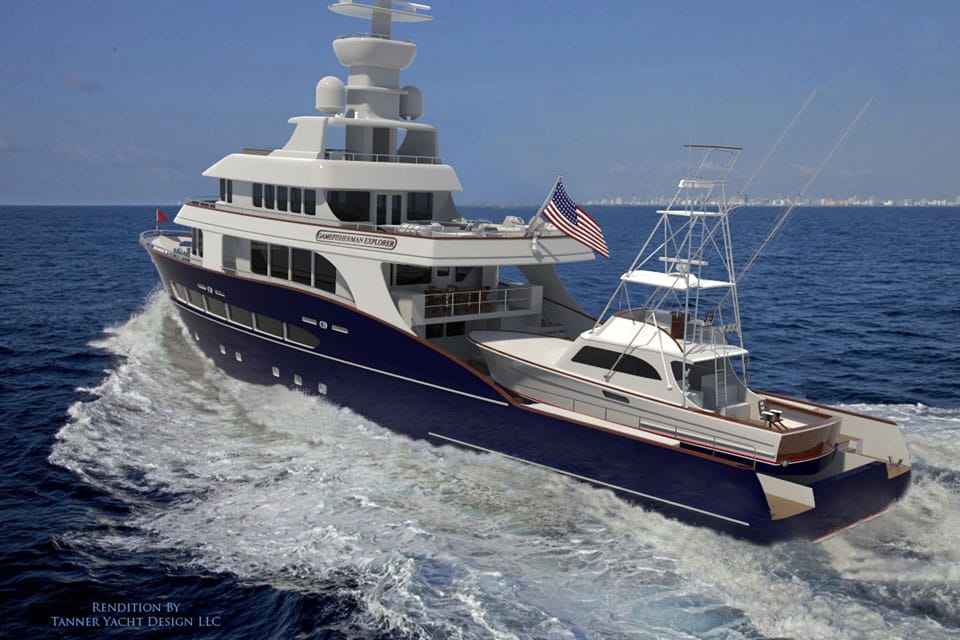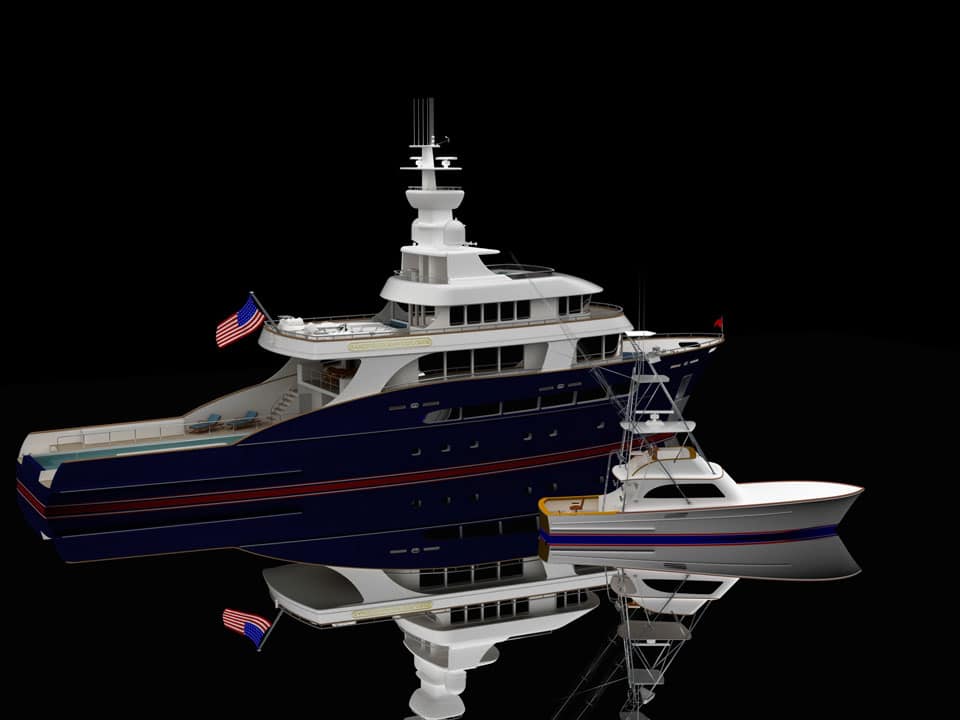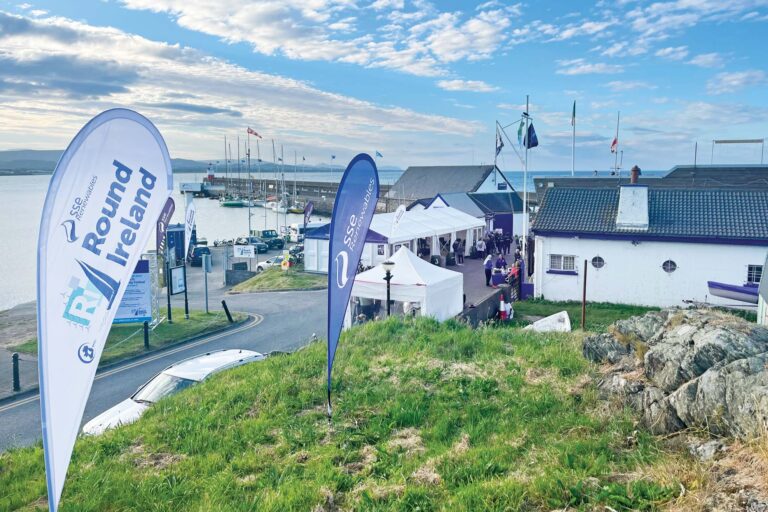



The U.S. Navy defines a boat as any model that will fit aboard a ship. Based on that logic, a ship is any vessel that can carry a boat, which should qualify the Gamefisherman Explorer 130 as a ship. She certainly looks the part. Her multilayer superstructure towers above the water, the forest of antennas fit for a ship of war. I wonder if all those protrusions will create a microcosm of weather as she plies the seas.
All kidding aside, the Explorer 130 is an imposing vessel, which fits beautifully with her purpose. Designed by Erwin Gerards of EG Designs, with concept by Mike Matlack of Gamefisherman Inc., this yacht will carry a crowd of offshore fishing enthusiasts and their families across oceans in search of the ultimate catch. Like other ships, the Gamefisherman rides on a pure displacement bottom, shaped to carry a heavy payload and still be easily driven.
From the waterline to the broken sheer line, she resembles a typical sport-fishing boat. The clipper bow and flared topsides in the forward sections give her a bit of grace and, at the same time, provide reserve buoyancy for plowing through steep head seas. High bulwarks help keep solid water off the decks, and big scuppers quickly evacuate what does come aboard. Windows above the rub rail delineate the location of the salon deck, and the portlights below it indicate to observers where the living quarters of the lower deck are. These portlights also break up the topside surface area and reduce the perception of height.
The main deck, or owner’s deck, occupies all of the area within the bottom layer of the superstructure. It has a full-width stateroom forward, a huge head and dressing room just aft, an office, a lounge and dining area and, outside, a wonderful deck with a bar and an eight-place dining table. This is truly a luxurious apartment for the ship’s owners.
Utility, rather than style, has determined the shape of the superstructure, but the designers haven’t completely abandoned their artistic instincts. At the forward end of the superstructure, for example, Gerards has visually joined the sun deck with the owner’s deck via separate curvatures. If you draw a line from the forward slope of the sun deck, it won’t intersect with the curvature below it, but it will have nearly the same degree of rake.
A second set of curves, that of the trailing edge of the support panel beneath the boat deck and that of the sail panel at the aftermost end of the owner’s deck, visually unite the rear of the superstructure. The after terminus of the boat deck and its equivalent on the sun deck share with the transom the same forward angle of rake. Changing any one of these would strike a dissonant chord in this composition.
On occasion, paraphrasing an element of design, rather than quoting it, adds interest to the overall theme, much the way asymmetry in the human form makes a person more attractive. Aboard the Gamefisherman 130, the open area between the support panels on the owner’s deck recalls the shape of the side windows on the 46-foot sport-fisherman resting in the mothership’s well deck. The forward edge of the first window in the grouping along the salon deck suggests the thrust of the ship’s stem.
This design has to serve many masters, and assembling all of those requirements into an appealing whole, as Gerards has done, calls for a round of applause. The ship’s appearance reinforces her purpose as much as that purpose dictates her looks.
Gamefisherman, 772-220-4850; EG Designs LLC, 561-632-6290









